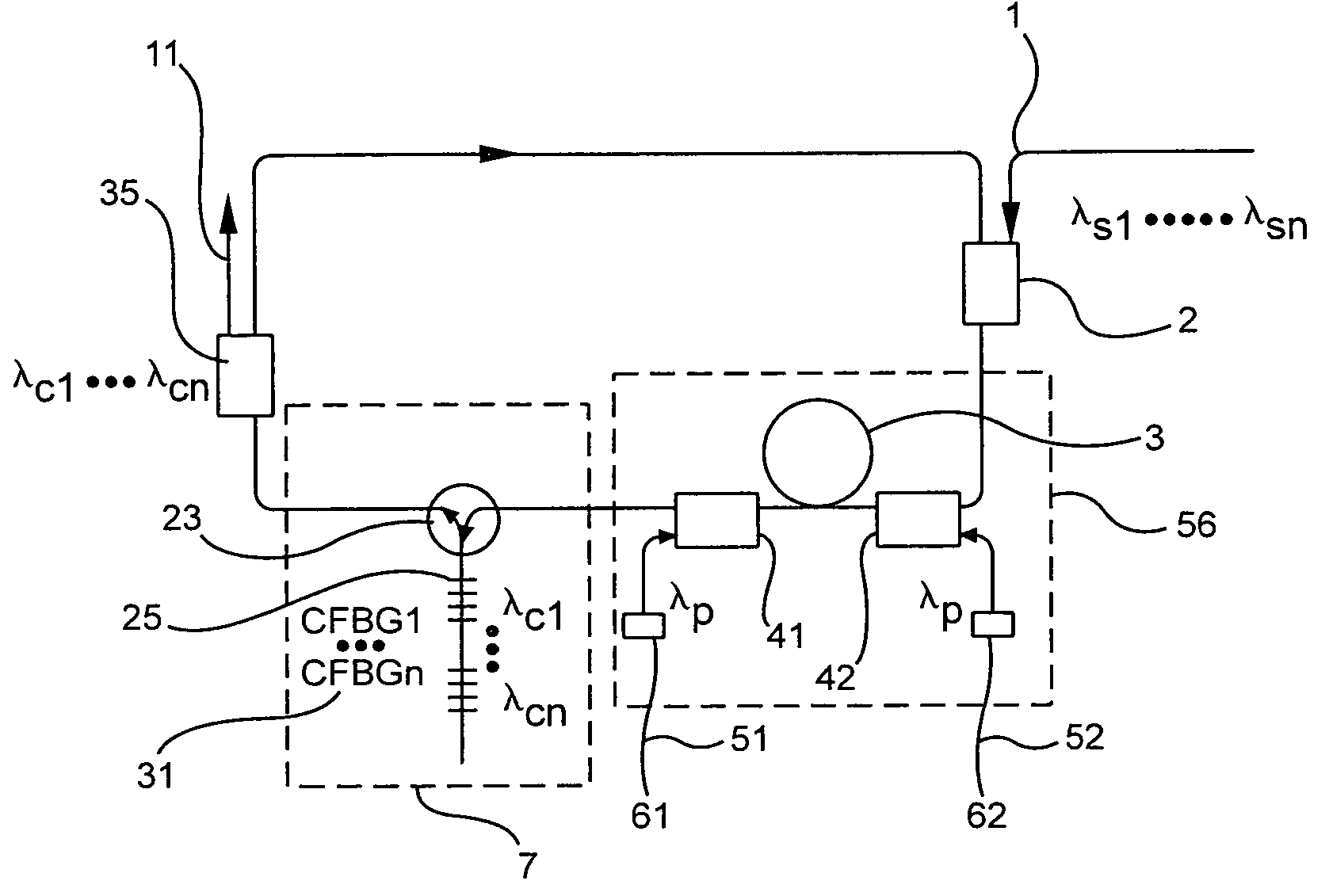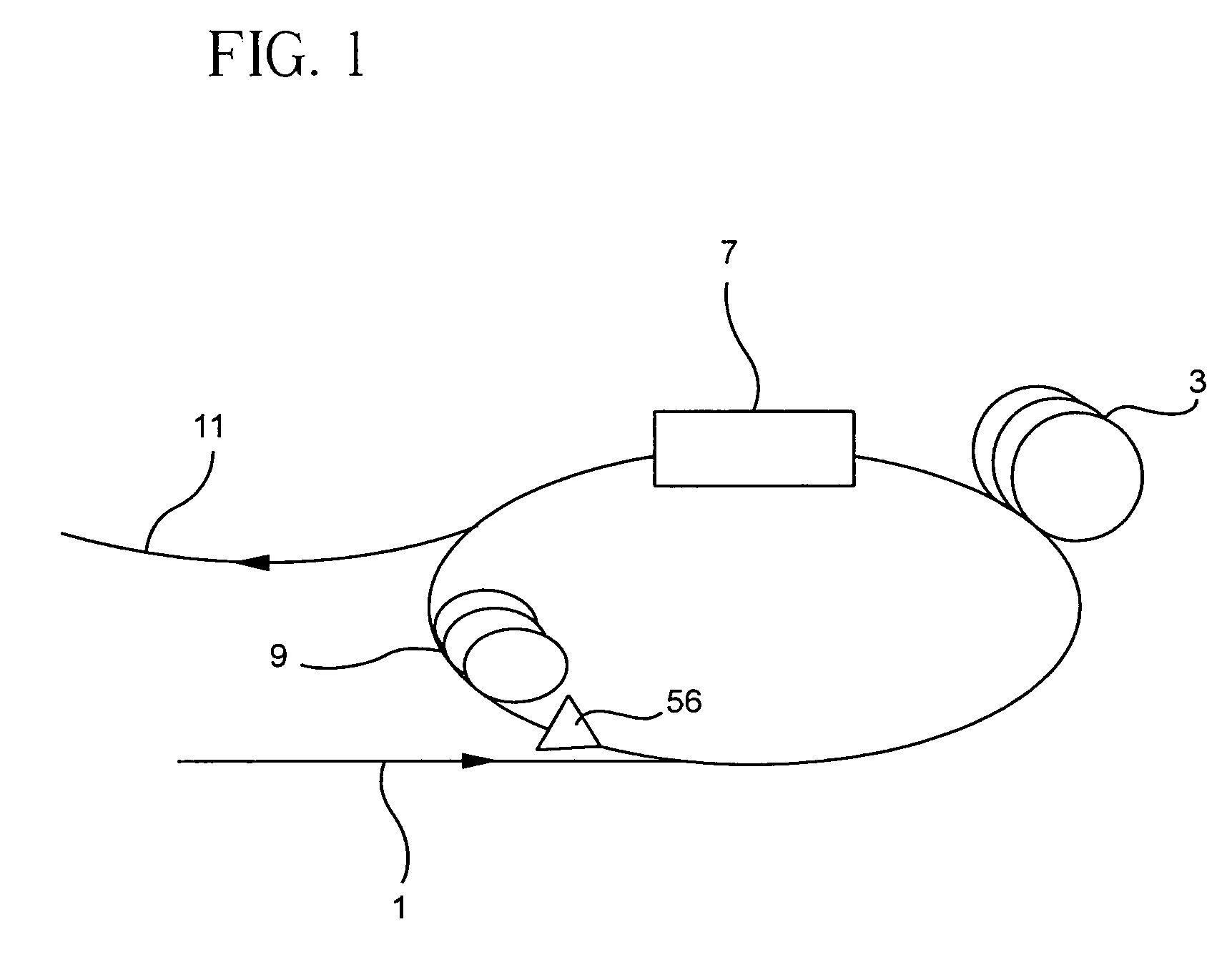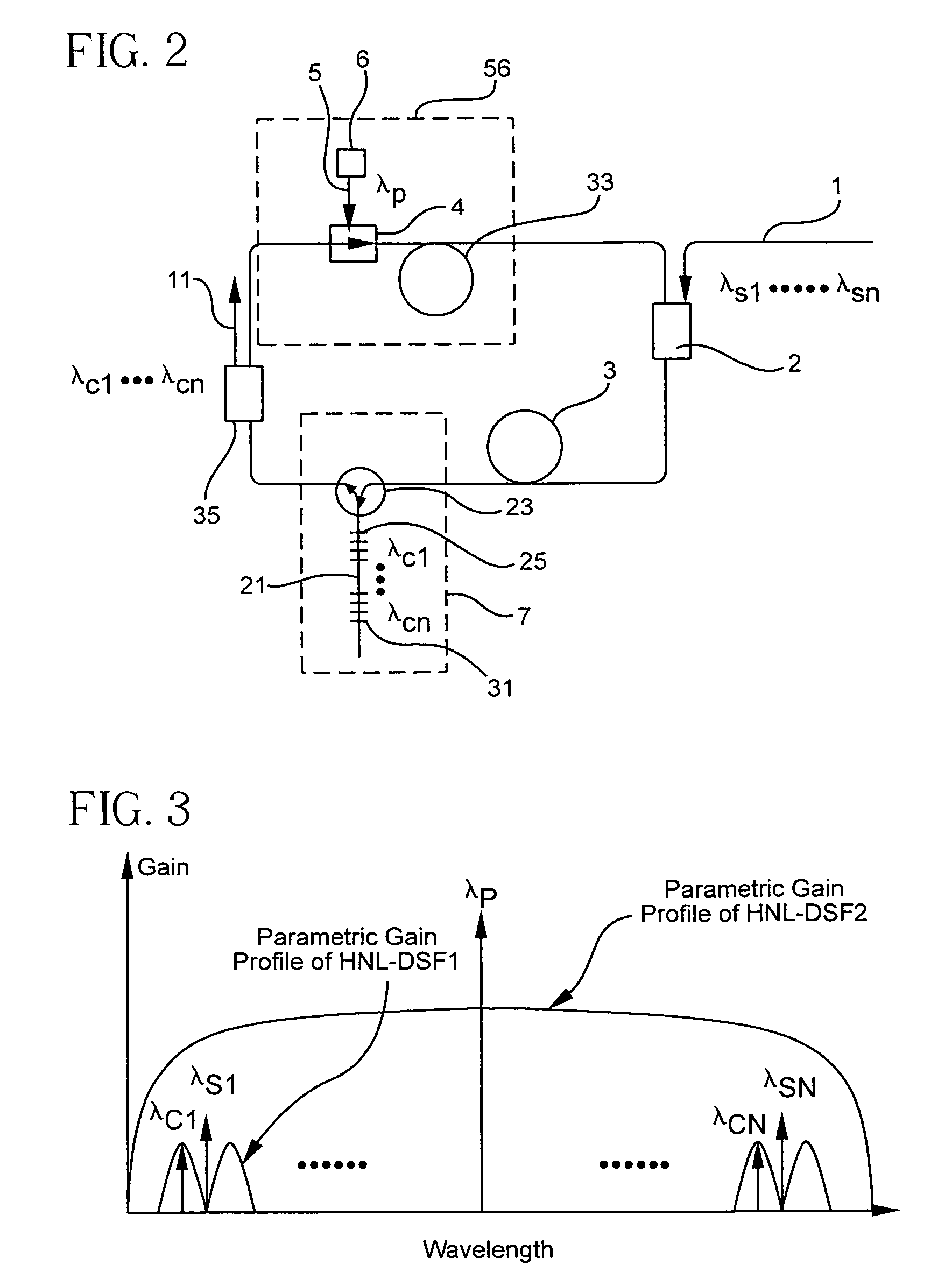Phase-insensitive recovery of clock pulses of wavelength division multiplexed optical signals
a clock pulse and wavelength division multiplexing technology, applied in the field of phase-insensitive recovery of clock pulses of wavelength division multiplexed optical signals, can solve the problems of increasing network cost without contributing additional functionality, reducing the effective and reducing the overall optical bandwidth of the clock recovery device. , to achieve the effect of large dispersion and efficient gain
- Summary
- Abstract
- Description
- Claims
- Application Information
AI Technical Summary
Benefits of technology
Problems solved by technology
Method used
Image
Examples
Embodiment Construction
[0021]A novel approach to the multi-channel all-optical clock recovery (MOCR) was proposed by A. Ellis in a U.S. patent application Ser. No. 10 / 153,957 filed Aug. 11, 2003 entitled “Recovery of Clock Pulses of Wavelength Division Multiplexed Optical Signals” assigned to the same assignee. This approach is based on a fiber-optic parametric oscillator, in which periodically modulated gain results from the phase-sensitive FWM process in the fiber. Phase-sensitive parametric amplification operation is inherently unstable due to the cavity length shifts caused by the environment such as temperature changes. To solve this problem, gratings were proposed as a passive method to stabilize the cavity length in the same patent application. Experimental results show that the gratings can indeed maintain the cavity length matched to the clock frequencies of the input signals. However, because the cavity gain modulation resulting from the FWM process is optical phase sensitive, the above method m...
PUM
 Login to View More
Login to View More Abstract
Description
Claims
Application Information
 Login to View More
Login to View More - R&D
- Intellectual Property
- Life Sciences
- Materials
- Tech Scout
- Unparalleled Data Quality
- Higher Quality Content
- 60% Fewer Hallucinations
Browse by: Latest US Patents, China's latest patents, Technical Efficacy Thesaurus, Application Domain, Technology Topic, Popular Technical Reports.
© 2025 PatSnap. All rights reserved.Legal|Privacy policy|Modern Slavery Act Transparency Statement|Sitemap|About US| Contact US: help@patsnap.com



